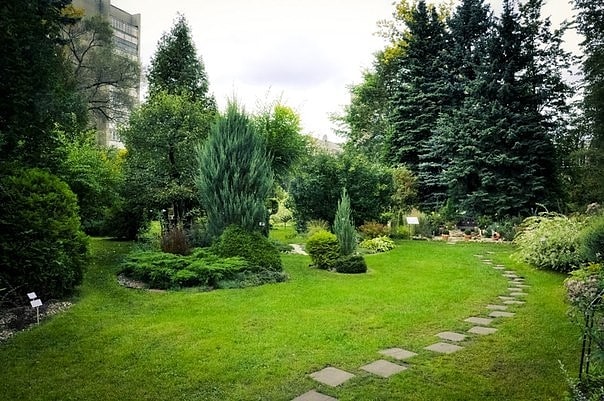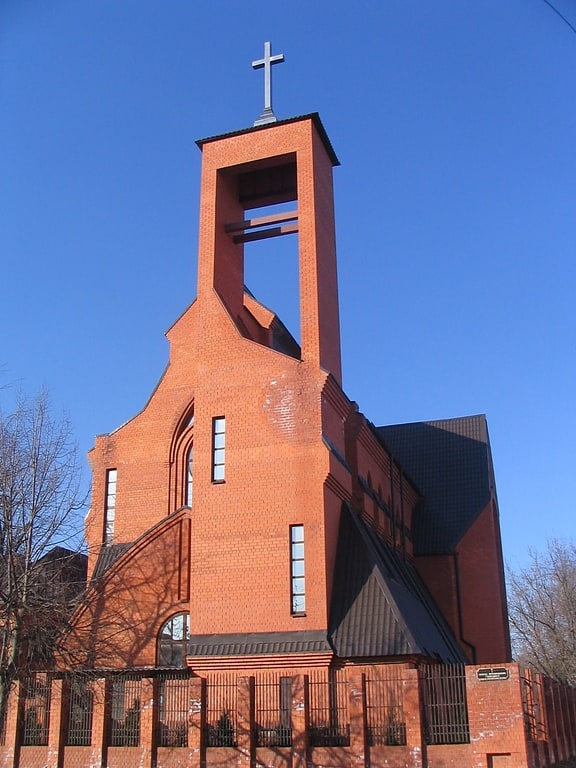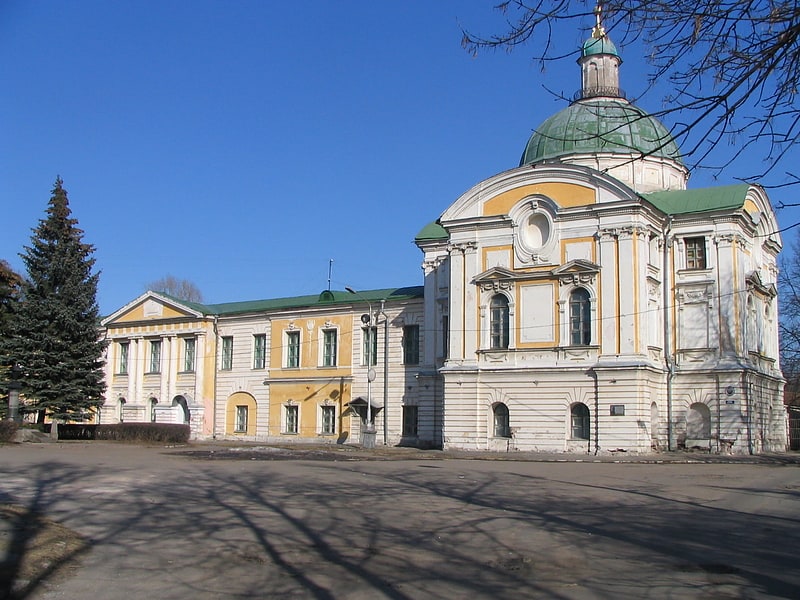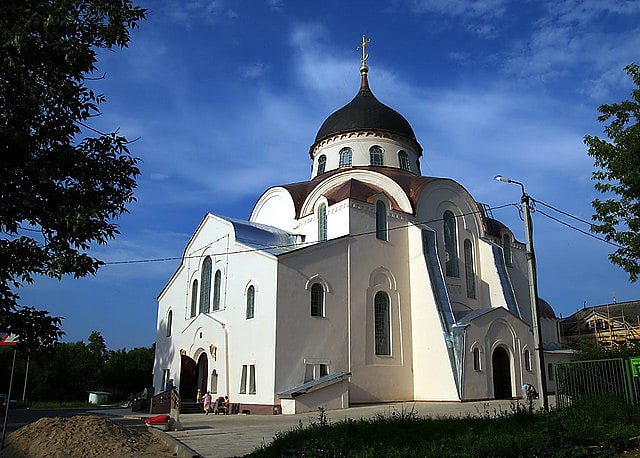Discover 7 hidden attractions, cool sights, and unusual things to do in Tver (Russia). Don't miss out on these must-see attractions: Botanical Garden of Tver State University, Transfiguration of the Lord Church, and Tver River Terminal. Also, be sure to include Tverskoj imperatorskij putevoj dvorec in your itinerary.
Below, you can find the list of the most amazing places you should visit in Tver (Tver).
Table of Contents
Botanical Garden of Tver State University

Also known as: Ботанический сад ТвГУ
Botanical garden in Tver, Russia. Botanical Garden of Tver State University — the northernmost botanical garden with an exhibition of steppe plants, only one of its kind in the Upper Volga. Located in Zavolzhsky Tver region, near the confluence of the Volga Tvertsa. It is valued as a site of historical, cultural and natural heritage besides being an archaeological monument.
The garden includes about 350 species of trees and shrubs. An impressive total of 2,000 herbs grow here. One of the major attractions in the gardens is a pond dating back to the 18th century.[1]
Address: пер. Шевченко, 16, 170000 Тверь
Transfiguration of the Lord Church

Also known as: Храм Преображения Господня
Catholic church in Tver, Russia. The Transfiguration of the Lord Church It is a Catholic church in Tver, belonging to the Archdiocese of the Mother of God in Moscow in the Russian Federation, built between 1994 and 2002.
The Catholic parish of Tver existed since the early nineteenth century. In 1864, a larger room with bodies, a presbytery and a church was built vast library. The church was confiscated in 1920 and disjointed library. Secularized, the church was demolished in 1974.
In the 1990s, the parish was again officially registered and a new church consecrated by Archbishop Tadeusz Kondrusiewicz in 2003.[2]
Tver River Terminal

Tver River Terminal or Tverskoy rechnoy vokzal is a partially destroyed passenger terminal of river transport in Tver. It is situated at the confluence of the Volga and Tvertsa rivers, on the left bank of the Volga, just near the river mouth of Tvertsa.
The construction began in 1935, near the site of the demolished Otroch Uspensky Monastery, and was completed by 1938. Both architects and most of the workers on site were prisoners of the Volgolag labour camp (part of the Gulag).
Because of the compromises and corner-cutting made during the planning and construction, the building's structure began to decline by the end of 1980s. Due to the financial difficulties that city experienced in 1990s and early 2000s, local authorities were unable to afford proper repairs, which lead to further deterioration.
By that time, following the decline of water transport in the region, the river terminal building was out of the commission for almost a decade. In the following years, up until 2011, it was sometimes used as a venue for art expositions, while some of the sections were rented out to various tenants.
On the eve of August 7, 2017, main building began collapsing—a process that continued on the next day, eventually leading to the loss of external walls, floor structures and the roof.[3]
Tverskoj imperatorskij putevoj dvorec

The Tver Imperial Way Palace is an 18th-century architectural monument located in the historic center of Tver on Sobornaya Square, between Sovetskaya Street, the Starovolzhsky Bridge and the City Garden.
Address: ул. Советская, 3, Tver
Sobor Voskresenia Hristova

The Council of the Resurrection - the Orthodox Council of Tver, the Department of Tver's Eparchy. Erected in 1914.
The Council was founded in 1914 intended for workers of Morozowa Manufaktura, living in a separate estate. It was connected to the complex of the buildings of the female monastery of the Nativity. The building was one of the churches erected throughout the Russian Empire to commemorate the three hundred years of the reign of the Romanow family. A thousand rubles for its construction were donated by Tsar Nicholas II. The finished temple was dedicated to the Archbishop of Tver and Kaszyński Serafim (Cziczagow). During the ceremony, another initiator of the construction of the temple was present - the Great Princess Elżbieta Fyodorowna Romanowa, which was the superior of the female monastery of Saints Marta and Maria in Moscow. The church was open for only a few years. After the October Revolution, the Bolshevik authorities closed it together with the neighboring monastery of the Lord and allocated to secular purposes. The building was returned only in 1988. Four years later, the Bishop of Tver and Kaszyński Wiktor (Olejnik) made his re -sacrifice. The building has been thoroughly renovated.
From 2000, the relics of St. Sergius (Sriebrianski), a hieromnich serving as a chaplain, a nun from the monastery of Saints Marta and Maria, a newcomer. Next to the temple, a chapel dedicated to the saints of Tsar Nicholas II and his family was erected.
The Council represents the Neo -Survivor Style, imitates the medieval sacred architecture of the Pskov region.
Address: 1 Баррикадная улица, Tver
Zhukov Air and Space Defence Academy

Also known as: Военная академия воздушно-космической обороны имени Маршала Советского Союза Г. К. Жукова
Educational institution in Tver, Russia. The Zhukov Air and Space Defense Academy, or formally the Military Academy of Air and Space Defence named after Marshal of the Soviet Union G. K. Zhukov is a Russian military academy located on the banks of the Volga River in Tver. The academy, formed in 1956, is named after Soviet Marshal Georgy Zhukov. It was one of the main education centers of the Russian Aerospace Defence Forces, prior to the Aerospace Defence Forces restructuring in 2015. The Academy currently trains personnel for the successor organisation, the Russian Aerospace Forces.
In addition to its educational and training mandate, this academy is a research center for studying problems of operational art and tactics, as well as command, communications, and control (C3) on air defense matters.[4]
Voskresenskij kafedralnyj sobor

Church